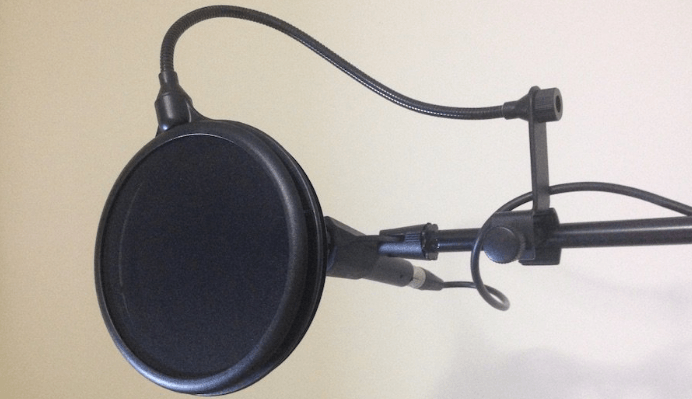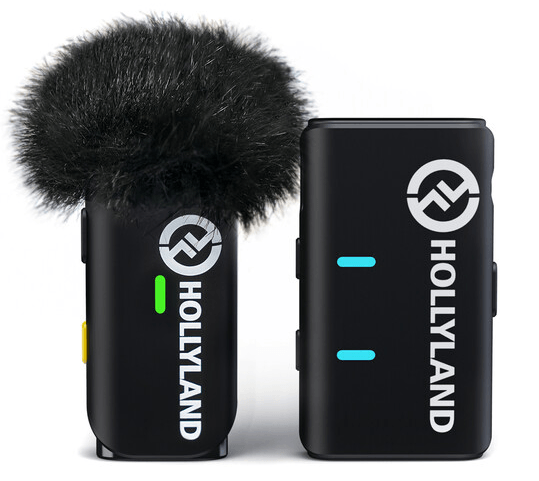Recording your voice on a song you wrote can be extremely rewarding and enjoyable! This is because it will make you feel proud and satisfied to be able to use vocal sounds that YOU made to represent yourself. But have you ever heard loud popping and snapping noises on a recording that you made? This is referred to as vocal pop. It is the kind that destroys the listening and recording experience. These sounds can be subtle, but occasionally, they are so obvious that you find yourself questioning why the recording had been issued in the first place. So, this is the moment at which a pop filter is important.
In short, a pop filter is the most effective way to eliminate vocal pop and address your recording troubles. Do you want to learn how? Continue to read this post! I will walk you through the overall talk about pop filters for microphones that you should be aware of.
An Overview of Pop Filters for Mics
The most important instrument for any voice actor is a high-quality microphone. But the microphone isn’t the only tool needed to produce clean and concise audio. To avoid the unpleasant pops and clicks that occur while recording, you’ll need a pop filter.

But what causes the need for the Pop filter, and are they really essential for you to succeed with your recordings? Let’s know everything below.
What Causes the Need for the Pop Filter?
Well, most of the processing still occurs while the audio is being recorded. However, a lot of editing is not necessary for a quality recording. The Pop Filter is a lifeline for sound technicians since it produces crystal-clear, well-finished recordings.
Do you know why?
If you’ve ever recorded your voice into your microphone and observed occasional distortion or clipping, it that might be the result of audio “popping.” Typically, plosive sounds like “b” and “p,” affect a recording. There could be “sibilance” in your recording as well. When you listen back to the audio, you’ll notice a harshness and possibly distortion on the “sh” part of the world. This is typically generated when you speak the word “sh,” which sounds like sheep.
Therefore, Pop filters, made from nylon that has been tightly woven and stretched over a circular frame, take in sudden sound waves. Additionally, there are metal pop screens that serve to redirect the airflow downward and away from the microphone by using a thin, fine-mesh metal screen in place of nylon.

These add-ons make it easy to attach the microphone stand and will minimize or completely get rid of distracting noises that may come through during recording.
It also helps to protect your microphone, which is a bonus. Using a pop shield stops you from accidentally spitting all over your pricey microphone, which is something you should avoid doing because the salt in your saliva is corrosive. And so on, it might extend the life of your microphone.
How to Choose the Right Pop Filter for Mics?
Are you annoyed by the audio popping in your podcast? Now is the time to get a pop filter. Even though there are a lot of options, you should think about which will work best for your podcast setup in order to focus your search.
Below are some tips to consider:
Tips to Choose the Right Pop Filter for Recording
- Consider Material: Opt for a pop filter made of quality materials like nylon or metal for effective air dispersion without compromising audio quality.
- Size Matters: Choose a filter with an appropriate diameter, balancing surface area for sound dispersion with practicality in your recording space.
- Mounting Compatibility: Ensure the filter is compatible with your microphone stand, guaranteeing a secure and stable setup.
- Prioritize Durability: Look for a sturdy construction to guarantee longevity, withstanding regular use, and potential wear and tear.
- Budget Wisely: Balance your recording needs with your budget, exploring options that offer the best value for your investment.
So now you are aware of how you can make the right choice while choosing the right pop filter for your mic. Yet, it is no wonder that having a perfect pop filter for the mic while recording is quite beneficial. Want to know how? Keep reading!
Benefits of Having the Right Pop Filter for Microphones
In the pursuit of impeccable audio quality, the role of a pop filter cannot be overstated. It stands guard against unwanted plosive sounds, ensuring many benefits. Let’s delve into them:
- Clarity and Purity
A high-quality pop filter effectively reduces plosive sounds, ensuring that your recordings remain clear and free from distortion. This enhanced clarity allows your audience to focus on the content rather than being distracted by unwanted audio artifacts.
- Professional Sound
Pop filters lend a touch of professionalism to your recordings. By eliminating disruptive plosive sounds, your audio takes on a smoother and more refined quality, making it more appealing to listeners. Whether you’re a podcaster, musician, or voice-over artist, this professionalism can set you apart from the competition.
- Efficient Recording
Using a pop filter minimizes the need for extensive post-production editing to remove plosive sounds. This not only saves you time but also preserves the natural quality of your voice or instrument. It’s a win-win situation where you get clean audio while streamlining your workflow.
- Extended Microphone Life
Plosive sounds can cause stress on a microphone’s diaphragm due to sudden bursts of air. This results in deterioration over time. A pop filter acts as a protective barrier, preventing these bursts of air from reaching the microphone. This, in turn, can extend the lifespan of your valuable microphone.
- Versatile Sound Capture
Pop filters are versatile and compatible with various recording scenarios. Whether you’re recording vocals, instruments, or even podcasts, the right pop filter can adapt to your needs, providing consistent and reliable performance. This versatility ensures that you can maintain excellent audio quality across a range of applications.
Conclusion
After reading this post, you are now aware that Pop filters are unsung heroes in the world of audio recording, playing a crucial role in maintaining sound quality and clarity. By understanding their purpose, setting them up correctly, and selecting the right pop filter for your needs, you can elevate the quality of your recordings. Whether you’re a podcaster, musician, or voice-over artist, integrating a pop filter into your recording setup is a small but significant step toward achieving impeccable audio results. So, those pesky plosives hold your recordings back – invest in a pop filter and watch your audio quality soar to new heights.
While perfecting your audio quality with the right pop filter is crucial, ensuring ideal mic positioning and flexibility can significantly enhance your recording setup. A wireless lavalier microphone, for instance, grants superior mobility and clarity, especially beneficial when capturing vocal performances or interviews.
FAQs
Q1. What is the purpose of a pop filter on a microphone?
It reduces or completely gets rid of popping noises that come from plosives in voice recording and singing because of the mechanical effect of fast-moving air on the microphone. While recording, pop filters can also prevent spit from getting on the microphone.
Q2. Why do musicians use pop filters?
Pop filters offer a lot of advantages. They ensure saliva doesn’t get all over your mic, improve sound quality, and stop pops, hisses, and lisps. Many of them are very reasonably priced and really simple to use! Think carefully about the microphone you use because a pop filter is necessary for many condenser varieties.
Q3. Can mouth noise be minimized using pop filters?
A pop filter can even lessen some mouth noises and breathing sounds, so your Ps and Bs won’t sound quite as explosive. While it won’t eliminate mouth sounds, it does help. Therefore, you will still need to remove mouth noise in addition to using a pop filter.

































.png)








